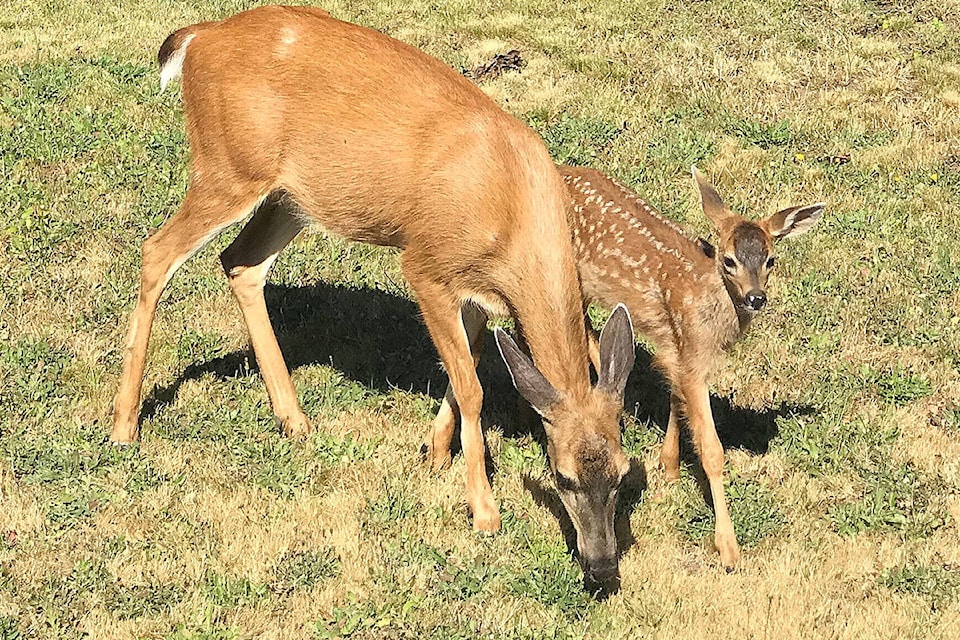Kristy Kilpatrick, from the Urban Wildlife Stewardship Society, shares a recent story of a young fawn, playfully running about after a crow in a local park. The charming scene took a potentially frightening turn when the fawn unwittingly followed the bird right out into the nearby street.
Fortunately the road was quiet at the time, and the fawn safely reunited with its mom, but it points to the unpredictable behaviour of young deer that local drivers need to be aware of.
“While older deer can be fairly savvy to the risks of the road and vehicles, the fawns really don’t have any road sense yet,” Kilpatrick explains. “It’s really important for drivers to actively scan ahead, especially in areas where deer are known to travel, and if you see a doe, chances are she’ll have one or more fawns tagging along nearby.”
While fawning season used to happen largely in May, factors such as a warmer climate have contributed to fawns today being born between late April and August. And that means locals need to be aware of the younger deer right through summer, whether they’re driving, walking or cycling local streets and trails, Kilpatrick says.
In addition to staying alert to the unpredictable antics of fawns, UWSS shares a few more timely tips to keep in mind this summer:
1. Avoid conflict with protective deer: As you stroll your neighbourhood or walk your dog, be aware that does will often act in a protective manner if you happen to be near a fawn – even if you can’t see the young animal. Remember that to the deer, a dog is a predator. Keep dogs leashed and walking near you, and DO NOT release the leash. If a doe follows you, try changing direction or crossing the road as you may be unknowingly walking toward a hidden fawn.
2. Reduce your chance of colliding with a deer: In addition to scanning ahead as you drive or cycle, slow down – good advice for all areas populated by children, pets and urban wildlife like deer! Keep your eyes on high alert, especially at night – regardless of age, headlights can confuse and cause deer to freeze or act unpredictably.
3. If you find a young fawn, leave it alone. Wildlife rehabilitation centres field numerous calls each year from people who have found an “orphaned” fawn, but typically advise residents to leave it alone – the mother is likely nearby and will return once you leave.
4. When to call WildArc: DO call WildArc if the fawn appears cold, weak, thin, injured, is bleating repetitively, or if the mother has not returned to a seemingly healthy fawn for more than eight hours. However, never remove a fawn on your own. If you’ve inadvertently handled the animal, rub an old towel on the grass, then gently wipe the fawn down with it to remove human scent.
To learn more, or get a deer awareness sign to post in your community, contact UWSS or the Township of Esquimalt.
